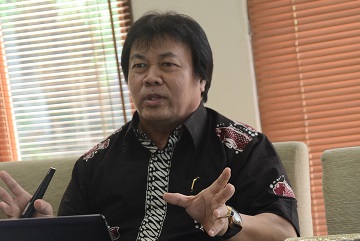Professor of IPB: Thousands of Small Islands would Sink in 2030

Indonesia as the largest archipelagic country in the world had 14,752 named islands with the coastline of 95,181 kilometers (km) and the sea area of 5.6 million square kilometers (km2). Of the total numbers of the islands, there were 10 thousand small islands which had the potential of the coastal natural resources which were very large and prospective as the development assets.
Permanent Professor of Faculty of Fisheries and Marine Scienes, Bogor Agricultural University (FPIK-IPB), Prof.Dr.Ir. Dietriech Geoffrey Bengen, DAA, DEA, in a pre-oratory scientific press conference in Campus of IPB Baranangsiang, Bogor (20/7), said, the climate change caused the sea level rise. “This means that if the small islands that form the terrain ecosystem are not maintained properly, such as the damaged coral reefs, the damaged mangrove, or the destructive fishing, then I expect that Indonesia will lose two thousand small islands that could potentially sink in 2030. Even it could be before that. The closest to us is Pulau Seribu, because the island forms the plains,” he said.
According to him, the small islands had the great potential, but the people of these islands were still low in the economic life. The reason was that its location was “remote” or far from the mainland, the location of the market was far away. The sources of fish were many but could not be sold in the market, because there were no adequate facilities and infrastructure.
“Fish meat is easily rotten. The fish should be preserved into the presto fish, the salted fish or the frozen. There should be in the cold storage, so that the freshness of the fish can be maintained. But the people in small islands do not have the ingredients. So that, potentially but economically, the community is not good,” he added.
In addition to limited facilities and infrastructure and remote locations, another factor was the low level of the education, and our partisanship or government towards the development of the small islands. Our orientation so far was the focus on the land development. This paradigm had not changed, so the marine potential was marginalized.
He said, one solution was to change the paradigm, and the sea should be the unifying and driving force of the development. The trick was with minawisata. Fishermen did not have to go to the market to sell fish, but the buyers should be brought to the islands with the tourism, namely by combining the fisheries and the ecotourism.
Integrated development could be on one island or several islands. The concept of development was different between island of plains and hilly island. The island of plains could only be 30-50 percent used as the tourist attraction, the rest was for conservation. The hilly island could have bigger use, because it was not vulnerable to climate change.
“Small islands can be utilized. Because around these islands, we can still find the good coral reefs, and others. Of course with the arrangement in such a way,” he said.(Zul)



